
Risk vs. Reward: Innovation in modern enterprises

Summary
In this guide, you will learn:
- What innovation means for modern enterprises and why it is critical for growth and reducing disruption
- How innovation unites teams across all levels around shared goals and excitement
- The three fundamental challenges to innovation: macroeconomic, business, and human factors
- Insights from a global survey of leaders and information workers on the current state of innovation
- The tensions between beliefs and behaviors that impact innovation success
- How these insights can help build stronger, faster, and smarter innovation pipelines for future breakthroughs
Try Miro now
Join thousands of teams using Miro to do their best work yet.
What does it take to innovate — and what gets in the way?
Innovation — defined as the development and launch of new products and services — is the lifeblood of enterprise companies. It brings the workforce together around a shared vision and goals. It sets the stage for future success while reducing the risk of disruption. And, on a human level, it gets people excited — from individual contributors to C-suite executives.
To gain insight into the state of innovation today, Miro surveyed more than 1,700 leaders and 8,000 information workers in seven global markets. Our findings reveal that innovation is top-of-mind for most leaders and information workers. But the data also point to three fundamental types of challenges that prevent organizations from reaching their full innovation potential: macroeconomic, business, and human.

By highlighting tensions between beliefs and behavior and revealing fundamental areas for growth, our insights pave the way for stronger, faster, and smarter innovation pipelines and building the next big thing.
Download an abridged version of this report
Global leaders agree innovation is urgent
Our findings show nearly universal (98%) agreement among leaders that innovation is urgent at this time — and information workers share these views.

In fact, 82% of leaders and 72% of information workers agree that innovation is more urgent now than it was a few years ago. And the reason is clear: 79% of leaders and 76% of information workers say it is necessary to win against the competition — without it, they risk disruption.
And innovation isn’t just timely and urgent — it’s also crucial for survival. Eighty-two percent of leaders say a company will become extinct within five years if it fails to innovate.
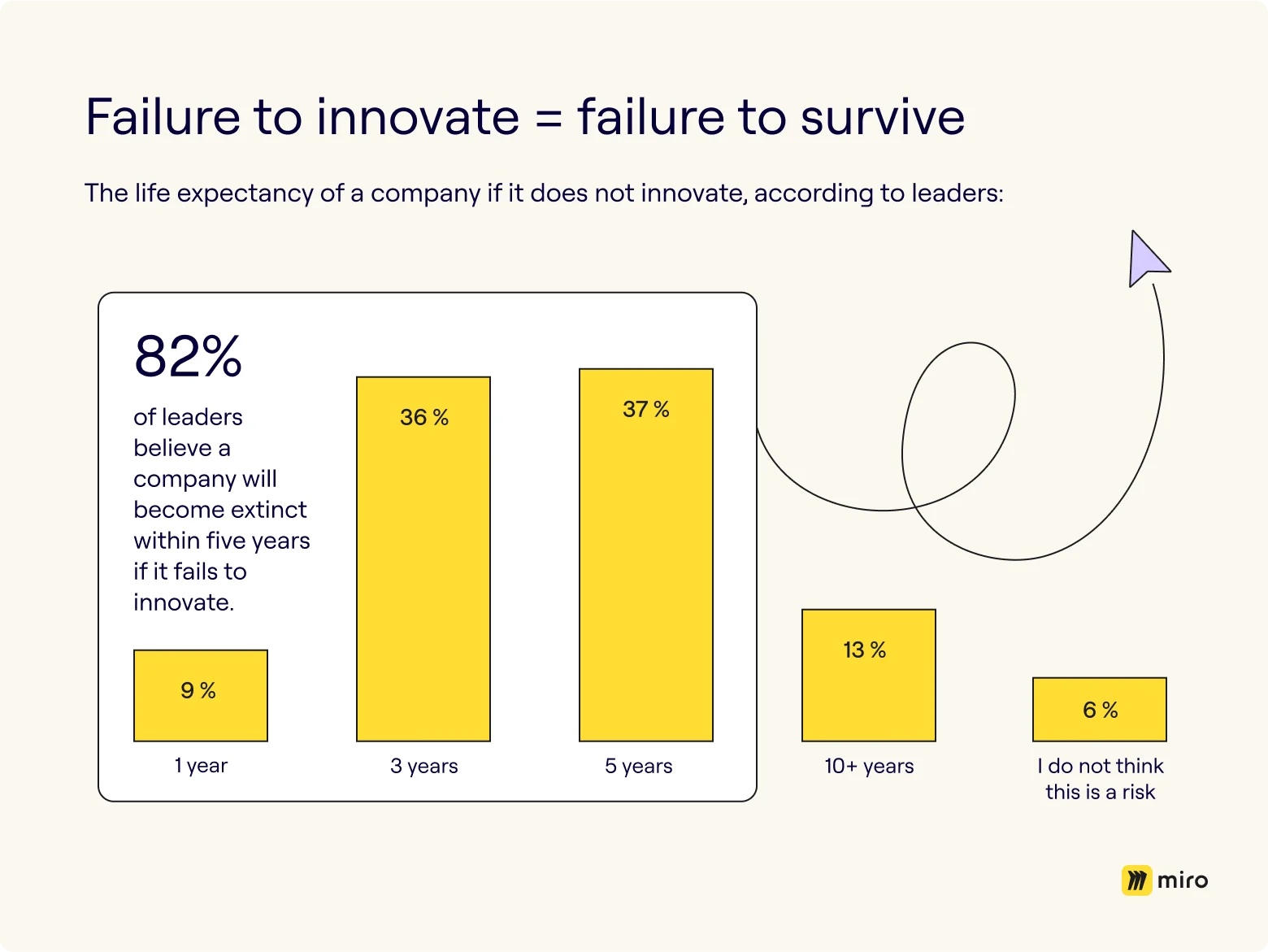
Though such widespread agreement suggests that innovation is non-negotiable, 62% of leaders and 52% of information workers agree that it’s easy for innovation to fall by the wayside at their companies. Why are organizations struggling to innovate at scale and speed?
Macroeconomic challenges
Uncertain times create tension between short-term needs and long-term goals
Today’s unpredictable market doesn’t just influence present-day decision-making — it shapes the innovations of the future. Without a crystal ball, organizations are divided on how to tackle product and service development in this complex moment.
Fifty-seven percent of leaders and 47% of information workers say that innovation feels more like a luxury than a necessity at this time. What’s more, over half (54%) of global leaders agree that their companies should pause innovation until the economy is more stable.
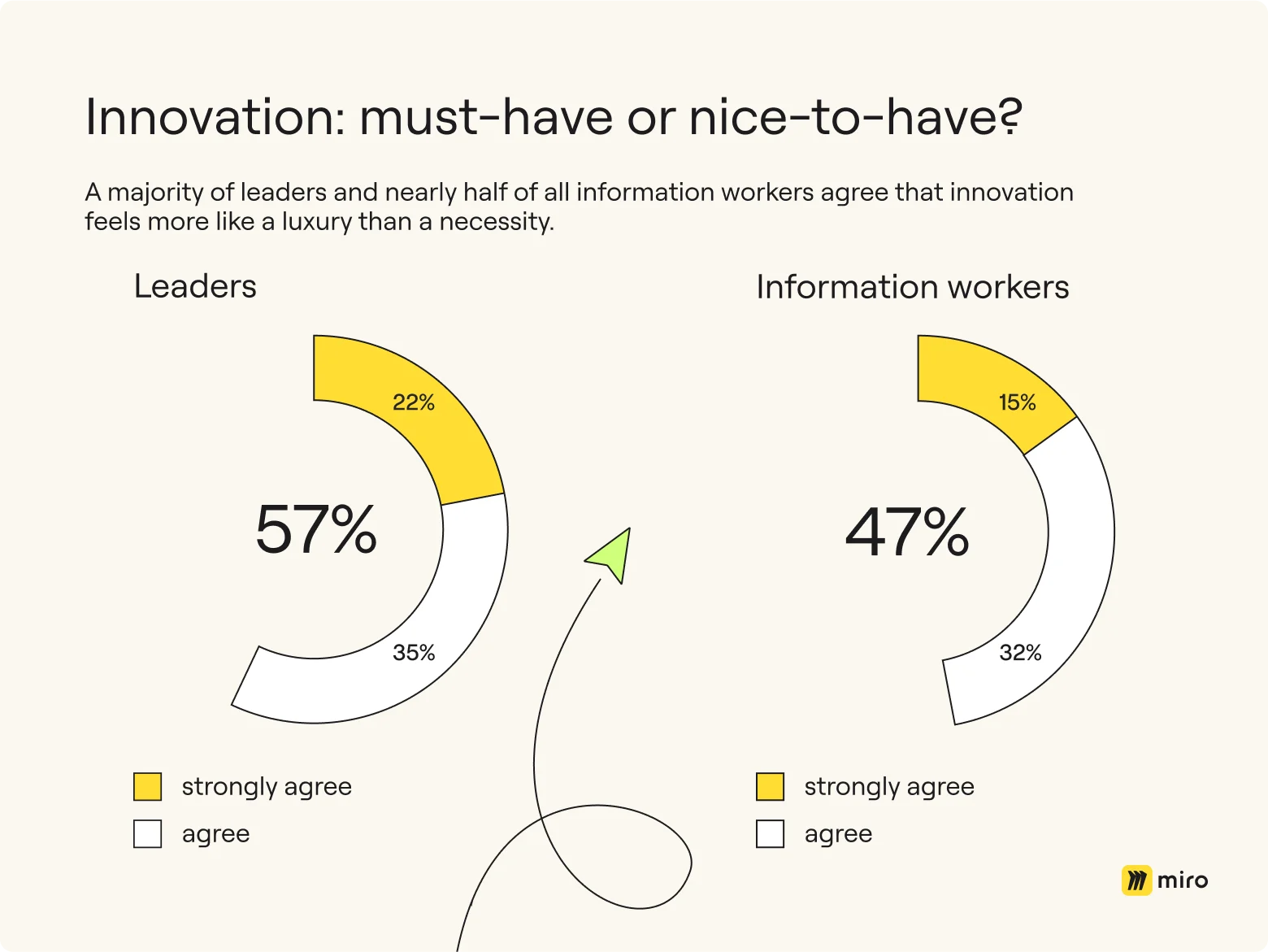
Our findings suggest that the macro climate shapes how companies approach innovation — and how much risk they’re willing to tolerate. Fifty-eight percent of leaders and 42% of information workers agree that their company is afraid to prioritize big, bold breakthrough innovation in the current economy.
Indeed, only 34% of leaders agree that breakthroughs (or moonshots) are the best path forward for their company, though 41% point to competitors’ breakthrough innovations as the biggest threat to their business.

Sticking with what you know might seem like the safest course of action, but, in rapidly changing times, standing still can be more dangerous than taking a leap of faith into new territory.
Business challenges
Legacy tech and a lack of collaboration and communication hinder companies’ efforts to translate their innovation vision into reality
Business challenges to innovation fall into four fundamental buckets: technological, organizational, cultural, and strategic.
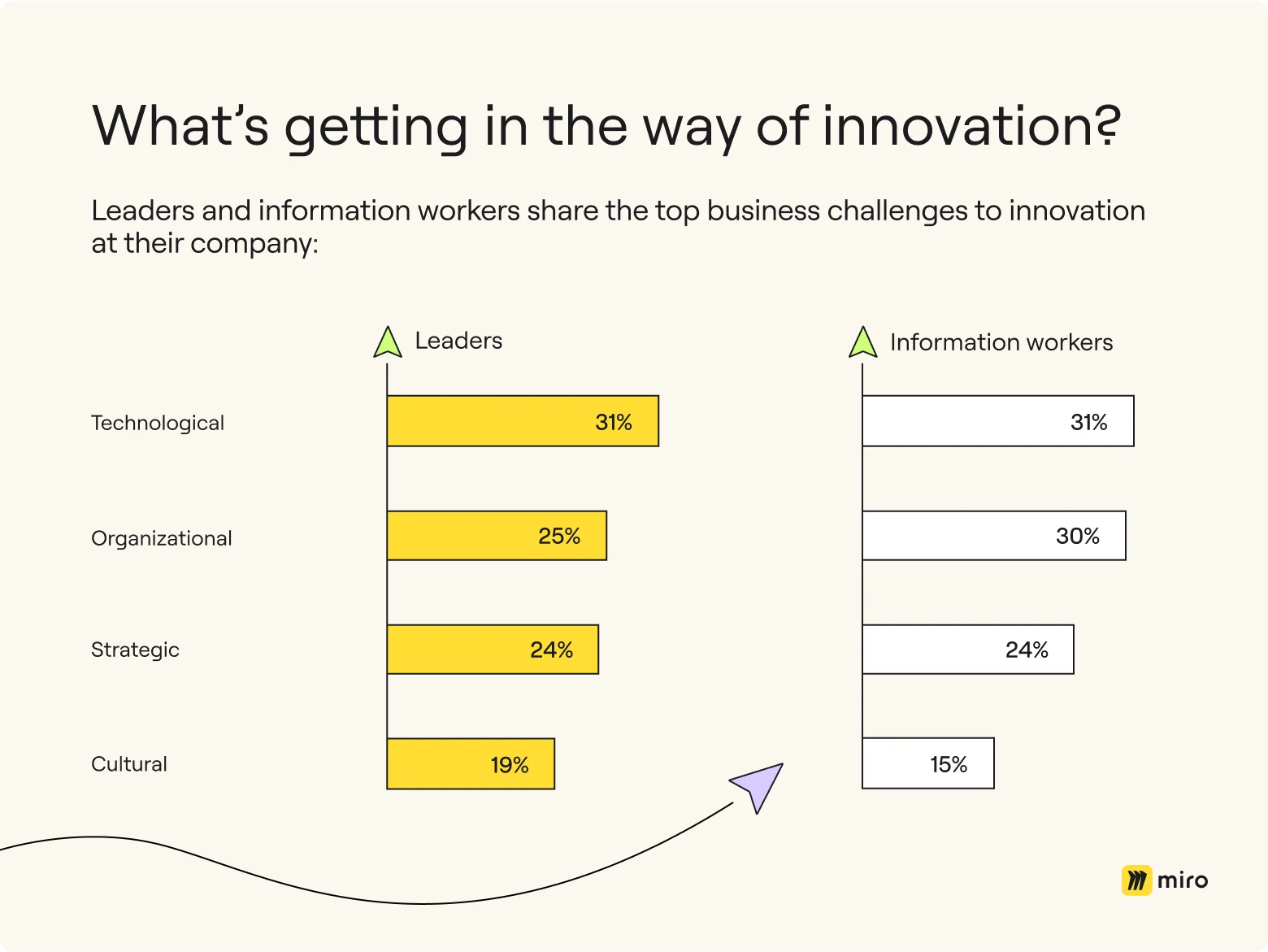
Technological challenges
Leaders and information workers agree: inadequate, outdated tools make innovation harder. Forty percent of leaders and 35% of workers say that legacy tech stifles creativity, while 39% of leaders and 37% of workers say it impedes productivity.
Organizational challenges
Thirty-four percent of leaders and 30% of information workers say challenges with cross-functional collaboration are a major roadblock to innovation. Speed and efficiency are also top pain points, as well as gaps in talent and skills.
Strategic challenges
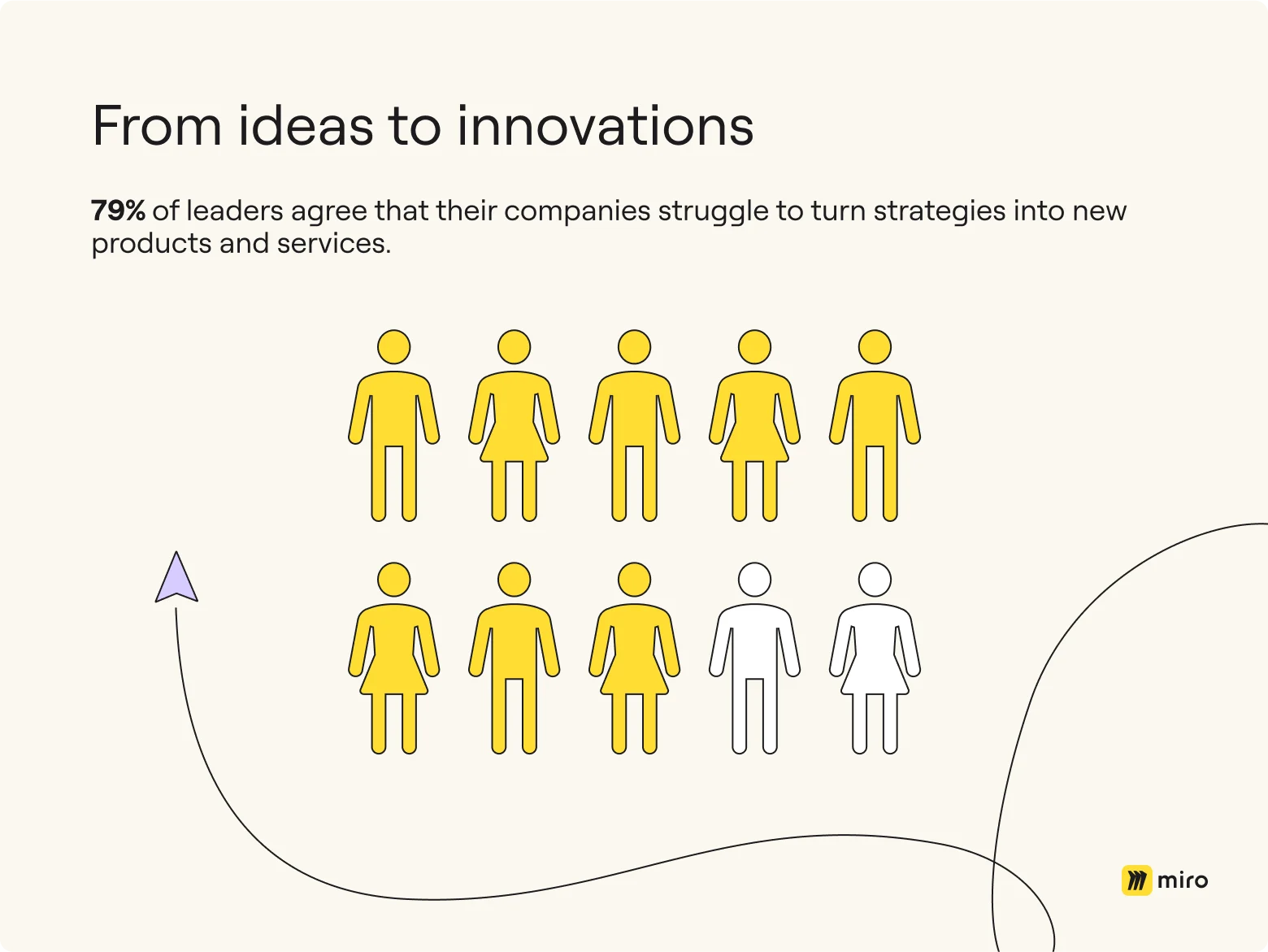
Cultural challenges
Here, we find a fundamental disconnect between leaders and information workers. Leaders cite a focus on competition rather than collaboration, as well as a lack of diverse perspectives, as the biggest obstacles to innovation. Meanwhile, information workers’ top three cultural challenges are resistance to change (33%), internal politics (28%), and burnout (28%).
Human challenges
Fear poses a persistent challenge to innovation across all levels of an organization
With people at the center of product and service development processes, emotions can come into play. In fact, 62% of leaders say that fear gets in the way of innovation at their company.
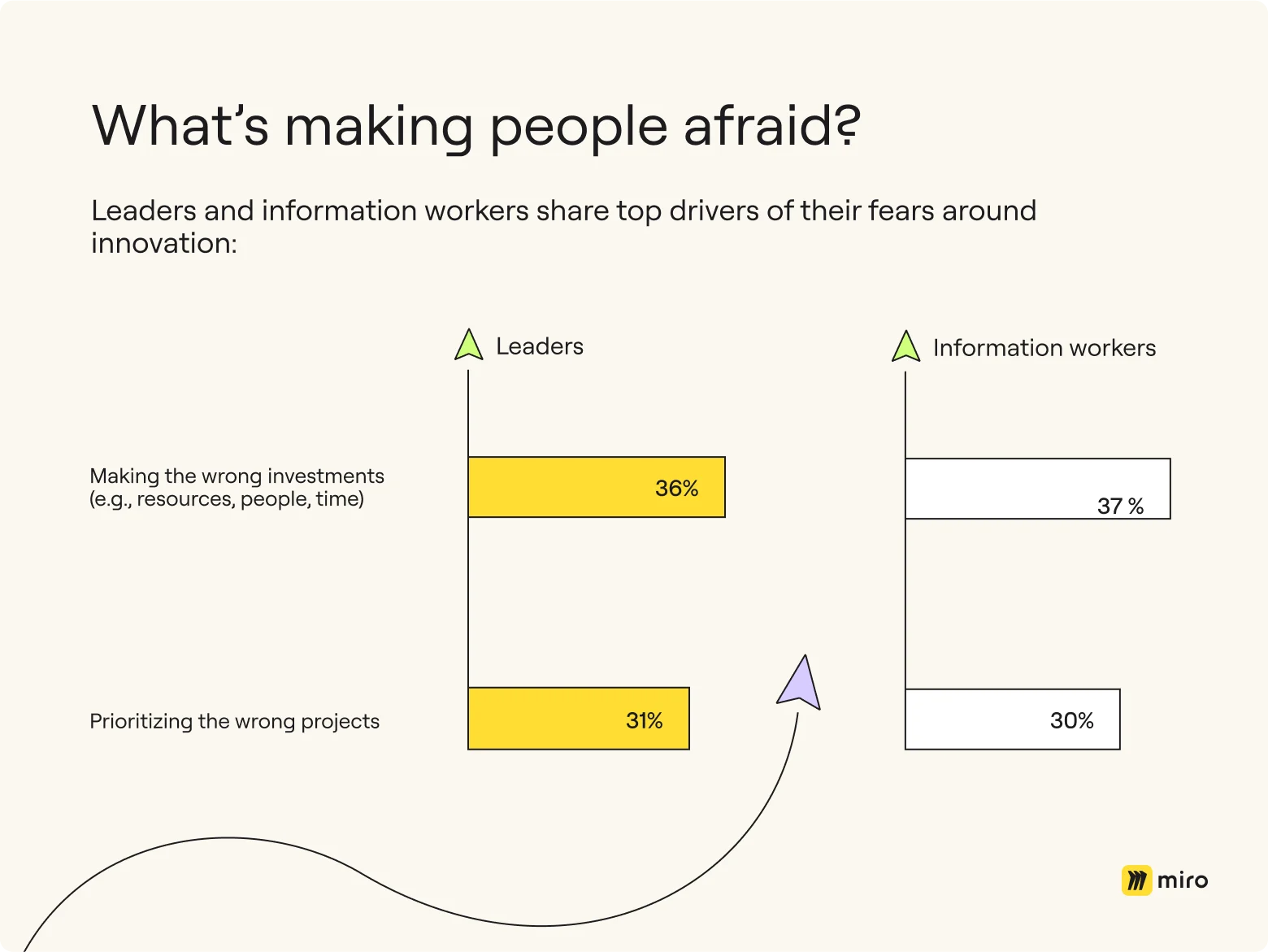
Fear is also personal: Nearly ⅓ of leaders worry about derailing their careers or damaging their reputations if innovation projects go awry, while 52% of information workers worry their jobs are at risk if their companies fail to innovate.
Innovation is good for business and people
While we find widespread agreement among leaders that innovation helps their companies win against the competition (80%), grow revenue and profit (83%), and expand the customer base (84%), there are many additional, more human benefits. Eighty-two percent of leaders agree that innovation helps recruit and retain talent, and 70% of information workers say it can reduce churn.
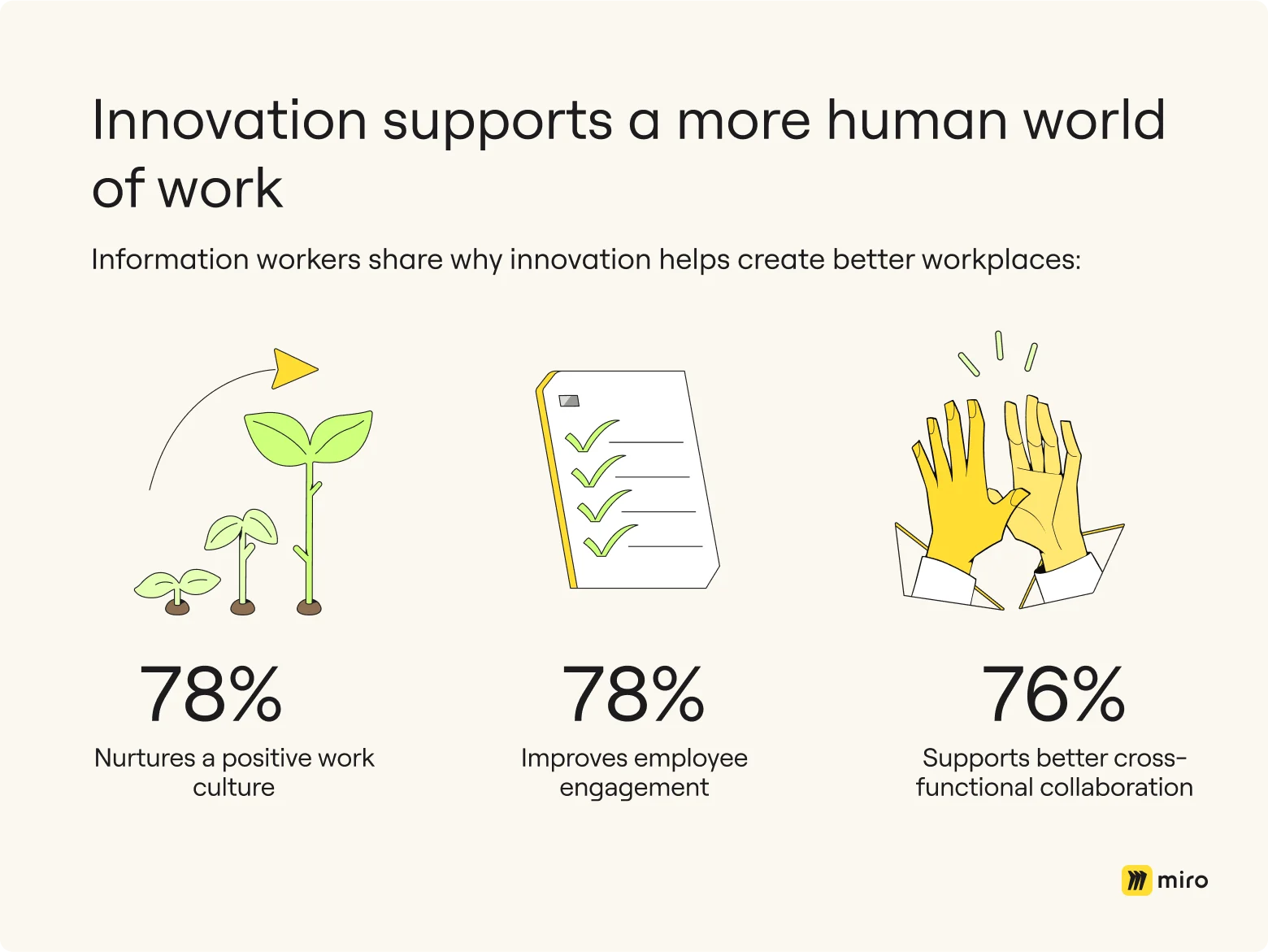
How to overcome the innovation crisis
- Be clear on strategy and communicate it throughout the organization
- Develop a diverse portfolio, including pursuing breakthrough bets with confidence
- Streamline cross-functional product development processes, optimizing for velocity and customer-centricity
- Address the core drivers of fear, and work to normalize failure and failing fast
Methodology
To gain insights into the state of innovation in this unique moment, Miro conducted an online CAWI survey in July 2023. We surveyed 1,792 leaders — including heads, VPs, and C-level executives — and 8,261 full-time information workers in product, design, engineering, UX, project management, and other roles involved in product development workflows at enterprises. These leaders and information workers represent seven global markets — Australia, Germany, France, Japan, Netherlands, the United Kingdom, and the United States.
Author: Miro Team
Last update: October 22, 2025